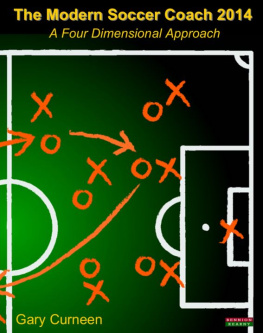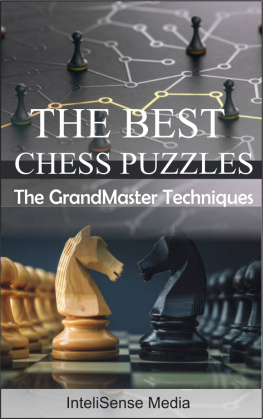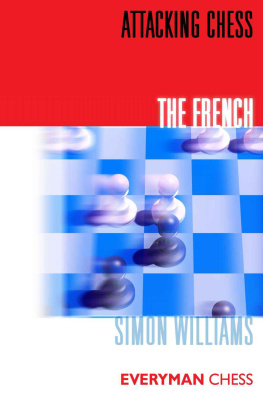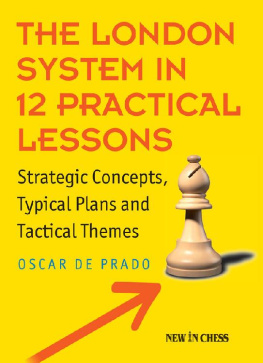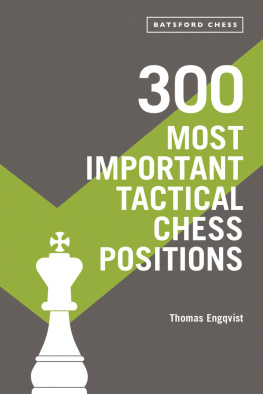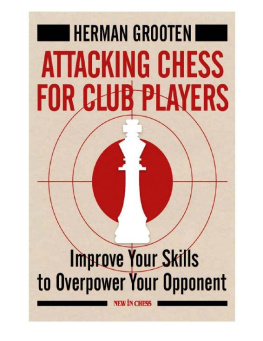Massimo Lucchesi - Attacking Soccer: A Tactical Analysis
Here you can read online Massimo Lucchesi - Attacking Soccer: A Tactical Analysis full text of the book (entire story) in english for free. Download pdf and epub, get meaning, cover and reviews about this ebook. year: 2001, publisher: Reedswain, Incorporated, genre: Science. Description of the work, (preface) as well as reviews are available. Best literature library LitArk.com created for fans of good reading and offers a wide selection of genres:
Romance novel
Science fiction
Adventure
Detective
Science
History
Home and family
Prose
Art
Politics
Computer
Non-fiction
Religion
Business
Children
Humor
Choose a favorite category and find really read worthwhile books. Enjoy immersion in the world of imagination, feel the emotions of the characters or learn something new for yourself, make an fascinating discovery.
- Book:Attacking Soccer: A Tactical Analysis
- Author:
- Publisher:Reedswain, Incorporated
- Genre:
- Year:2001
- Rating:5 / 5
- Favourites:Add to favourites
- Your mark:
- 100
- 1
- 2
- 3
- 4
- 5
Attacking Soccer: A Tactical Analysis: summary, description and annotation
We offer to read an annotation, description, summary or preface (depends on what the author of the book "Attacking Soccer: A Tactical Analysis" wrote himself). If you haven't found the necessary information about the book — write in the comments, we will try to find it.
Attacking Soccer: A Tactical Analysis — read online for free the complete book (whole text) full work
Below is the text of the book, divided by pages. System saving the place of the last page read, allows you to conveniently read the book "Attacking Soccer: A Tactical Analysis" online for free, without having to search again every time where you left off. Put a bookmark, and you can go to the page where you finished reading at any time.
Font size:
Interval:
Bookmark:
Attacking Soccer
a tactical analysis
by
Massimo Lucchesi
Published by
Reedswain Inc.
All rights reserved. Except for use in a review.The reproduction or utilization of this book in any form or by any electronic, mechanical or other means, now known or hereafter invented, including xerography, photocopying and recording, and in any information storage and retrieval system, is forbidden without written permission of the publisher.
Editing
Bryan R. Beaver
Reedswain Publishing
88 Wells Road
Spring City, PA 19475
800.331.5191
www.reedswain.com
info@reedswain.com
PREFACE
If I were asked to pick out a match from all those that I have watched, I would have to choose Italys 32 victory against Brazil at Sarri in 1982. More recently I would select the splendid match at Old Trafford between Manchester United and Real Madrid (23) in 2000. As a neutral spectator I will always remember the nerve wracking semi-final between Germany and France during the 1982 World Cup, which ended 5-4 after the comeback by the Germans, or again the 3-2 victory of the French over Brazil in Mexico 1986. These were all matches of an extraordinary emotional intensity, contested by top class players who loyally confronted each other in an attempt to score that one extra goal that would guarantee the final victory for their team. They were all matches full of goals.
Goals are the magic of soccer. A goal is that strange thing that can make the thousands of people present in a stadium jump to their feet as one, and with them all those others that are watching the match in bars or at home in an armchair in front of the TV. A goal is that flash that unites millions of people all over the country, who will roar out their joy or their despair as the occasion demands. A goal is an extraordinary charge of emotion, which can generate an otherwise almost unthinkable explosion of collective energy positive or negative as it may be. A goal breaks down all kinds of barriers, evoking the same reactions from people of different creeds, social classes, culture and origin. A goal is a work of art with the superb finishing touches from the free kicks of Del Piero and Zidane. A goal notched up by Inzaghi or Raul is a feat of cunning. A goal is an act of power as in the free kicks of Mihajlovic or Batistuta. A goal is pure class as in the one scored by the incomparable Maradona against the English during the World Cup in 1986 or Van Bastens incredible lob shot that went over the head of the Russian Dasaev and gave the Dutch national team the title of European champions in 1988. For all of us that have played soccer on the fields in the suburbs or at school, a goal has always been the means to make us feel as if we, too, were just a little Pel, a Cruijff, a Platini, a Maradona, a Van Basten, a Baggio, a Figo, a Vieri or a Shevchenko. A goal can be a lot of things, but in the end it all comes down to this: goals are the magic of soccer.
The book that you are about to read aims to be an instrument in the hands of coaches, experts or even supporters, which, by way of a tactical analysis of the attacking phase of play, will help to understand and develop match strategies directed at goal scoring and victory, which are the surest ways of generating deep emotion in the soccer tribe.
MASSIMO LUCCHESI
m.lucchesi@allenatore.net
1: THE PRINCIPAL TACTICAL ELEMENTS OF THE ATTACKING PHASE
A DEFINITION OF THE ATTACKING PHASE AND ITS PRINCIPAL CHARACTERISTICS.
The attacking phase of play is defined as the tactical situation when one team is in possession of the ball with the clear intent of approaching the opponents goal.
The principal characteristics of a good attacking phase are the following:
- UNPREDICTABILITY : that is, the teams ability to use the whole range of attacking techniques (which will be explained below), modifying or varying them constantly in order to put the opponents under constant pressure.
- EFFECTIVENESS : the attacking phase, apart from being varied and unpredictable, must above all be effective. The real effectiveness of the attacking phase can be shown by the percentage of goals scored by the team. Of course each player on the team contributes to its goal scoring average, but the overall figure will always depend on those whose principal job it is to attack and strike at goal. In other words, in order to maximize the effectiveness of the offensive phase, the attacking strategy adopted must be based on the particular characteristics of the principal strikers on the team. Only then can we determine the best schemes that will put them in the position of being able to score.
- ADAPTABILITY : as we have seen, the team must be unpredictable and effective; but it is also important that it can construct an attacking phase that can meet the many variables, whether tactical or otherwise, which it will have to face. The offensive play of the team will therefore have to adapt itself to the ground characteristics of the playing field, to the weather conditions and above all to the type of play used by the opponents. Let me try to clarify these concepts with a few examples. If, for example, the ground is uneven it will be more difficult to keep possession of the ball and it will also be important that the defense should avoid running unnecessary risks; it being, therefore, more difficult to organize long build-up plays, the team should opt for quick attacks based on a reduced number of passes in a vertical rather than a horizontal direction. The same general rule applies if the field is a particularly small one, or if the weather conditions have left the ground difficult to play on or slippery. On the contrary, if the temperature is high, it will usually be better to attack by adopting more elaborate operations in order to allow the team to move forward in a homogeneous way, so avoiding the useless waste of energy that could be brought about by a match played at a speed and intensity which might be impossible to keep up in the long run, and which would, therefore, have negative effects on the final result. It is of course important also to adapt our own play to that of our opponents, assessing how they prefer to attack in order to put ourselves in the position of being able to steal the ball and set up a counter attack (note that, as we will see later, the construction of an attack will normally vary in relation to the part of the field and the section of the team that recovers the ball). Apart from anticipating where it will be possible to regain possession of the ball in order to coordinate counter attacking moves, it is also a good idea to look carefully at the strengths and weaknesses of our opponents defense system, both from a collective point of view and from that of each individual player. The considerations arising from this analysis will allow us to adjust our attacking schemes to our opponents defensive system so that we can strike where they are weakest. However, though it may be a good idea to adjust the characteristics of our attacking play to our opponents, we should never convert our own philosophy into something totally unrecognizable just to meet another team. To sum up, we can say that a good attacking system should be:
- Unpredictable and unpredictability, we must remember, is something that can be learned and improved.
- Effective and its effectiveness will partly depend on the ability of the coach to organize attacking play that makes the most of his players strengths.
- Adaptable , to a certain extent, to the strengths and weaknesses of the opponents.
THE RELATIONSHIP BETWEEN THE ATTACKING PHASE AND THE DEFENSIVE PHASE, AND THE INFLUENCE THAT THIS RELATIONSHIP HAS ON WAYS OF DEVELOPING AN ATTACKING GAME.
The attacking phase is not a tactical situation that can be taken by itself, independent of the phase when the opponents have possession and our team is defending. The two phases are in fact closely connected, and the quality of the attacking phase will depend on that of the defense and vice versa. To be as clear as possible about this, here are a couple of examples: if our opponents are attacking and putting us under heavy pressure, then we will very likely have to recover the ball in the defense zone (near the penalty box), and, in order not to run unnecessary risks, play a long pass in an attempt to set up a counter attack; on the contrary, if we manage to block the other players and recover the ball in the midfield, then it will be easier to develop a quick and more organized counter attack.
Font size:
Interval:
Bookmark:
Similar books «Attacking Soccer: A Tactical Analysis»
Look at similar books to Attacking Soccer: A Tactical Analysis. We have selected literature similar in name and meaning in the hope of providing readers with more options to find new, interesting, not yet read works.
Discussion, reviews of the book Attacking Soccer: A Tactical Analysis and just readers' own opinions. Leave your comments, write what you think about the work, its meaning or the main characters. Specify what exactly you liked and what you didn't like, and why you think so.


